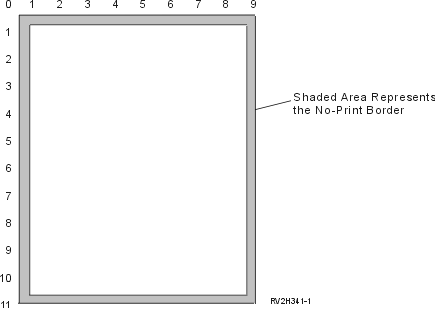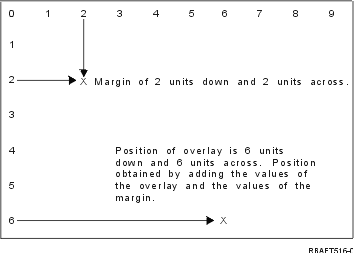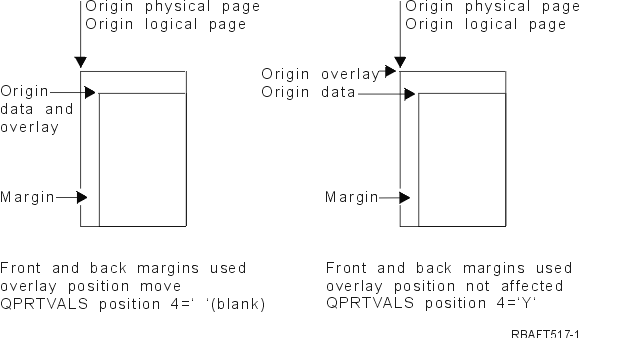
To use the margin parameters, the device type (DEVTYPE) parameter on the printer file must be *AFPDS. For device types other than *AFPDS, the iSeries™ server calculates the margins.
Margins define the starting point of printed output on a piece of paper. The FRONTMGN parameter specifies the starting point on the front side of the paper; the BACKMGN parameter specifies the starting point on the back side of the paper.
There are two types of margins: front and back. Offset values, down and across, are used to fix the position of the margin. Across is defined as left to right. Down is defined as top to bottom.
Margins are measured in either inches or centimeters. The type of measurement is specified in the unit-of-measure (UOM) parameter on the printer file.
Using *DEVD and 0 as margin parameter values
If you have existing application programs that specify how far across and how far down to start printing, you should specify 0 (zero) or *DEVD for the margin parameter offset values.
For printers configured as AFP(*NO), 0 is used to determine the starting point when *DEVD is specified.
The following diagram shows a no-print border. The size of the no-print border can vary from printer to printer.

Restrictions with the margin parameters
The margin parameters (both front and back) are ignored for spooled files that have *COR specified as the value for the page rotation (PAGRTT) printer file parameter. This is because *COR assumes a half-inch margin. In addition, the margin parameters are ignored for spooled files that have a pages per side (MULTIUP) value of 2, 3, or 4.
Using margin parameters and overlays
There are two ways to position your overlays
Positioning overlays based on margin parameters
Overlays specified with the back or front overlay printer file parameter are affected by the front or back margin parameters. The following diagram shows how your output would look if your front margin was defined as 2 units down and 2 units across and the placement of your overlay was 4 units down and 4 units across:

Positioning overlays independently
If you do not want the overlays moved by the values specified in the front or back margin parameters, you can specify a Y (uppercase) in position 4 of the data area QPRTVALS. The following diagram shows you the two ways to position the overlays:

To find out if data area QPRTVALS exists on your system, use the following command:
DSPDTAARA DTAARA(QUSRSYS/QPRTVALS)
If the data area QPRTVALS exists, but position 4 is not set to 'Y' (uppercase), use the following command:
CHGDTAARA DTAARA (QUSRSYS/QPRTVALS (4 1)) VALUE ('Y')
If you do not have data area QPRTVALS on your system, you can create one by using the following commands: